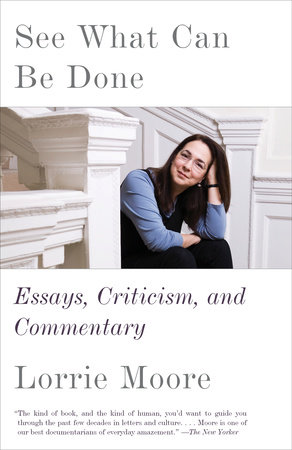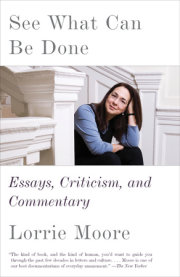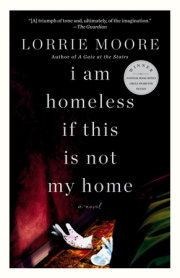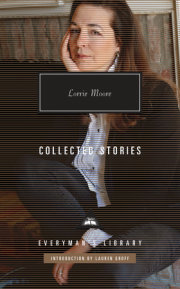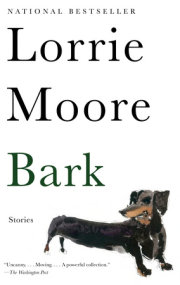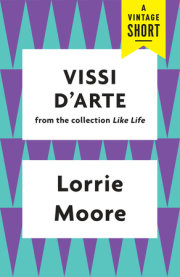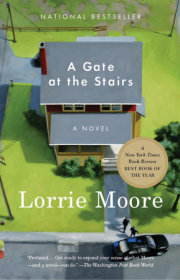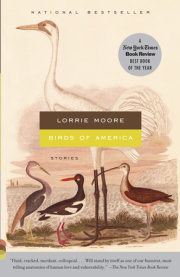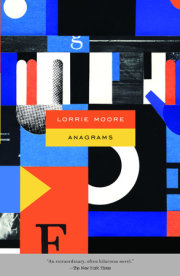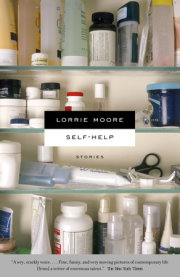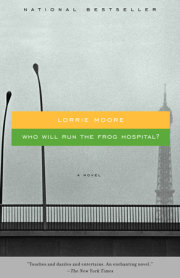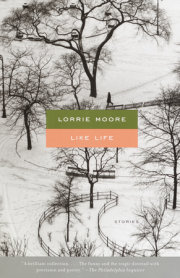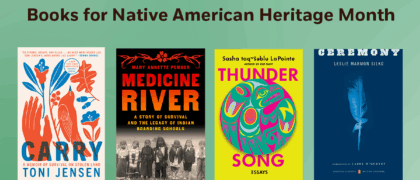Introduction: The MiscellanyThe title of this book—
See What Can Be Done—is not a boast but an instruction. I received it with almost every note I got from Robert Silvers, editor of
The New York Review of Books. He would propose I consider writing about something—he usually just FedExed a book to my door —and then he would offer a polite inquiry as to my interest: perhaps I’d like to take a look at such and such. “See what can be done,” he would invariably close. “My best, Bob.” It was a magical request, and it suggested that one might like to surprise oneself. Perhaps a door could open and you would step through it, though he would be the one to have put it there in the first place.
Most of the pieces in this book are what could be done, at least by me, as I immersed myself in seeing what others could do; cultural responses to cultural responses. However personal and idiosyncratic they are, the pieces by and large fall into the category of “reviewing” although when a review gets long enough it may qualify as a “critical essay” and when it is succinct enough it can be a remark. (Remarks are not necessarily lesser: I believe Bette Davis should have won a Nobel Prize for “Old age is no place for sissies,” a line Bob Dylan himself might covet.) Essays, reviews, occasional meditations are all included here. Whether there is really a reason to round them all up, even selectively, is a question I can’t answer. But I can say that I did the gathering because, looking at my decades-long life as a fiction writer, I noticed another trail had formed—a shadow life of miscellaneous prose pieces—and I wondered about it as a trip, if not precisely a journey.
The pieces begin in 1983 in Cornell’s literary magazine,
Epoch (where I wrote reviews of books by Margaret Atwood and Nora Ephron), and they end, in time for the golden anniversary the Summer of Love, with a take on Stephen Stills—thirty-four years of, well, stuff. I mercifully have not included every last thing, though it may seem as if I have; in the late 1980s when I was once introduced to a particular guest at a party, the guest said, “Oh, yes! I know you: you review books!” and my heart sank. After my debut collection of stories was published, Anatole Broyard, then a
New York Times Book Review editor, was the first review-commissioner to phone me at my office in Wisconsin and offer me work. Slightly terrified, I kept taking his assignments. “I think I’ve become Anatole Broyard’s slave girl,” I said to my then beau. “I don’t know how to stop.” And indeed I probably wrote too many of them, telling myself I needed the money.
But a fiction writer reviewing is performing—I still believe—an essential task. Very few practicing artists review the work of their fellow sculptors or painters or dancers or composers and so the conversation is left to non-practitioners. Although there are of course exceptions, and although the film directors of the French New Wave began as critics, and the sculptor Donald Judd wrote reviews of his peers, as did Schumann, Debussy (under a pseudonym), and Virgl Thomson, in general the medium and the idiom of criticism do not belong to artists. One cannot really dance a review of someone else’s dance. One cannot paint a review of someone else’s exhibition. Criticism can be a rarefied field, but that aspect is usually galling to the artist, especially when the artist feels misunderstood and is reminded that critics have never attempted let alone forged the creative work that they, the critics, nonetheless feel emboldened to evaluate. In the words of the jazz musician Ben Sidran:
Critics! Can’t even float. They just stand on the shore. Wave at the boat. Or as Aristotle wrote in Politics, "Those who are to be judges must also be performers." Conversely, perhaps those who are performers must also be judges—once in a while. And so a contribution to the cultural conversation—by narrative artists themselves, speaking in unmuddied, unacademic, unobfuscating critical voices—I thought of as a difficult but obligatory citizenship: jury duty. (The longest piece here, coincidentally, is a defense of a jury.)
My own way of discussing the work of others, then, has been improvised and not grounded in any philosophy or theory other than lack of philosophy or theory. It has been, de facto, I assume, a practitioner’s take. As for technique, I have always aimed for clarity and organization but don’t always succeed. I often move every which way in attempting to track my own thoughts about someone else’s endeavor; sometimes I inappropriately include my own life in the conversation to show how narrative art intrudes, fits, or does not fit into the daily lives of those who are experiencing it. I have aimed for the human, but also for the eccentricities and particularities of the real encounter, and I do not always avoid stupidities. Sometimes I head for stupidities in order to discuss them, even if they are my own. Often a piece is constructed in a circular fashion, like a cat clearing a space before it naps. Other times I veer. I sometimes try to pull back as much as I can to look at something from a distance, without losing my balance. I then also try to move forward again and bear down.
When, in 1999, I began writing for
The New York Review of Books, which published articles by people much better educated than I, but which also offered me more space than I was used to, my stance became that of the ingenuous Martian who had just landed on a gorgeous alien planet. With no agenda and only the usual amounts of research, I said, “What’s this?” I tried to figure out what feelings the piece contained, what it made the reader feel, what that said about our world and our lives and what feelings we value. I aimed for simple (I aspired to “deceptively simple”) and true. I aimed for bravery of opinion though I am not by temperament especially brave. But I admire iconoclasm if it is not too breezy or gratuitous. If what the Emperor was wearing was a mixed bag, I tried to indicate as much. I also tried to figure out what the Emperor had in mind, even if one is not supposed to guess at intention. I have tried to avoid petulance, Internet-ese, academic theory, the diction and dialect of the professionally educated critic, and never to use the word “relatable” instead of “sympathetic,” or ‘impact” as a verb, or any form of the word “enjoy,” which should be reserved for one’s grandparents or other relatives. I tried not to drag readers by the scruff of the neck and march them from paragraph to paragraph, point by point, but did not always succeed. I allowed myself asides and tangents and personal anecdotes because circumnavigating a thing—the napping cat again, patrolling for snakes—is sometimes a useful approach. First-person assessments engage me—Dorothy Parker's reviews were full of them so she could employ her rapier with faux reluctance -- and often the use of the first person is not arrogant but modest, hedged, and more accurate. One does not always have to write in the authoritative third-person voice of God: if you fail to sound like God (and you probably will), you may end up sounding like flap copy. The first-person pronoun can be a form of deference and is useful and precise when discussing the subjectivity and crowded detail of narrative art. It suggests one specific encounter paid close attention to. It appreciates the intersection of one individual reader’s life with the thing that has been read. It breathes air into the conversation—or can. When someone once said to me, “Your pieces in
The New York Review of Books are the only ones I can actually understand,” I knew it wasn’t praise—the speaker’s real subject was the difficult brilliance and impressive erudition of the other critics he admired there. Nonetheless, I decided to take it as a compliment. (One has to seize encouragement where one can.) Someone once also told me early on that there was a well-known list of six things a book review should always do. This caused me to break out into a cold sweat. I politely asked for the list but it was never given to me, nor did I ever find it anywhere, so I carried on, without knowledge of official requirements. And to this day I still don't know what those six things are.
I began writing about television by accident. I did not watch much television as an adult and had not watched much as a child, having grown up in a house where the watching of it was discouraged and highly supervised. We read the Bible every night at the dinner table, and in general television was considered a little wicked and lazy and for special occasions. Like eggnog. But in 2010, after
The Wire was already out on DVD, I watched the series on a binge (also like eggnog)—living in David Simon’s Baltimore for an entire summer—and afterward, intoxicated, and wanting to extend my experience there by reading what other people had to say (one terrific function of cultural criticism is a kind of afterlife of the original encounter), I could not find very much written about it. The London papers had some articles, but there was very little in the American press: nothing in
The New Yorker and something extremely tiny in
The New York Times. I asked Bob Silvers if he would like something for
The New York Review of Books, and he quickly said yes. His sensibility was always spry, eager, open, a source of joy for everyone who worked for him. He was so hiply catholic in his tastes and interests that he was game for practically any kind of cultural commentary: meditations on regional politics, reports on every manner of book, television, series, film, or even. Gameness is a beautiful quality in a person. My ignorance of a topic never deterred him from trying to assign it to me. He started offering more and more television for me to watch and see what could be done. I turned a few things down. But I took on programs and films I was genuinely interested in watching and wrote about them in my Martian way. Montaigne’s
que sais-je. A little light, a little wonder, some skepticism, some awe, some squinting, some
je ne sais quoi. Pick a thing up, study it, shake it, skip it across a still surface to see how much felt and lively life got baked into it. Does it sail? Observe. See what can be done.
Best Love Song of the Millennium (1999) Opinions on music can be stubborn and lonely things. I believe, for instance, that the 20th century’s most intoxicating waltz is “Let’s Go Fly a Kite” from
Mary Poppins. But don’t ask me, with any strenuousness, to justify it, or I will gnaw my fist and stare forlornly out the window. Nonetheless, a calm certitude can descend when considering the finest love song of the millennium. Such a song is really a matter less of opinion than of clear fact, the determination of which can be helped along by the following scientific method.
A millennium is a long time. Very few love songs written in the first three-quarters of it have we even heard of. These, therefore, we automatically eliminate. The few we do know are dubious confections, peppered with Hey nonnies or Ho nonnies or else strange, violent deaths befalling the lovers—briars and vine-roses sprouting from the corpses. The slaying and planting of people is poison to the love message of a song. It is a corruption, too much antithesis for the thesis. If death is imminent and about, it will always steal focus from love. And then we have a death song, more than a love one. A love song with no death in it, love that is not a fatal bargain or an addiction: that is a love song for the ages.
And so if we continue in this vein and eliminate from consideration all the songs of the 19th and 20th centuries in which death quickly befalls the singing lover, we can really make some progress. All the Liebestods and would-be Liebestods gone: most of Puccini, all of Wagner, even “As Long as He Needs Me” from
Oliver. (Did I fail to mention we are doing only Western music, and despite the marvelous “You’re a Hard Dog to Keep Under the Porch,” no country-western music at all? In fact, we are scarcely venturing outside the category of show tunes. Science has its demands.)
This brings us closer to the lighter popular song of the 20th century, and even here there is much pruning to do. “You Belong to Me” is too possessive, even materialistic; “You Were Meant for Me” is sweet but fraught with the hopeless yearning of bachelors secretly in love with solitude. “On the Street Where You Live” is the theme song of a stalker. “They Can’t Take That Away From Me” is a gorgeous laundry list of what to pack in the heart’s knapsack when fate forecloses on love; its genius is to rhyme the emotional souvenirs “the way you hold your knife” and “the way you changed my life.” But it can be sung terribly, and too often is. Then there are the blues, which, although full of the language of failed negotiations, can be friendly and delicious. But they are really about the long, slow dying of the singer, and not purely love songs at all.
Which brings us, finally, to the only logical choice for the greatest love song of the millennium: the final trio from Richard Strauss’s “Der Rosenkavalier,” of course. Here we have one of the most beautiful things ever written; if it can be sung at all, it will not be sung badly. Occurring at the opera’s penultimate moment, the older woman (the Marschallin) elegantly gives up her young lover (Octavian) upon glimpsing him newly in love with someone his own age (Sophie). Love, in the story by Hugo von Hofmannsthal, is simultaneously embraced and selflessly surrendered what are trios for? Light and wise, the song has the melodic depths and passion of Wagner but the libretto and spirit of Mozart. It is, as superlative musical things often are, a building upon, a historical summation, the borrowing by genius from genius. And in its breathtaking high notes it surely contains the music of the spheres; if the angels have tea kettles they whistle like this. “I chose to love him in the right way,” sings the Marschallin, “so that I would love even his love for another! . . . Most things in this world are unbelievable when you hear about them. But when they happen to you, you believe them and don’t know why . . . So be it.” The clock has run out on the Marschallin’s romantic life. She has had her chance, her time, and now she must bow out how suited to the close of this last thousand years. It is a knowing, queenly love song, in its exquisite sweetness and generosity, not unlike Dolly Parton’s sublime valedictory “I Will Always Love You.”
And so here I must stop: I have landed on country-western music again, surely the opposite of science.
Copyright © 2018 by Lorrie Moore. All rights reserved. No part of this excerpt may be reproduced or reprinted without permission in writing from the publisher.

